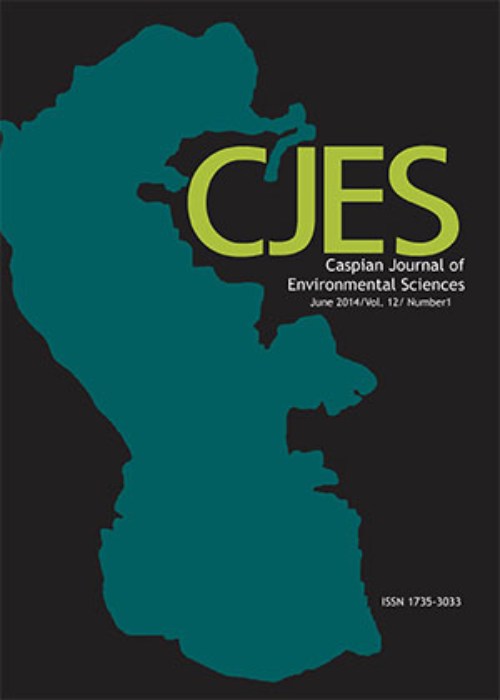فهرست مطالب
Caspian Journal of Environmental Sciences
Volume:2 Issue: 1, Winter 2004
- تاریخ انتشار: 1383/10/11
- تعداد عناوین: 4
-
Caspian Sea Level FluctuationsPage 1In this paper the main factors that influence the Caspian Sea level rising and the probable and improbable factors are discussed in detail. A cyclical behavior of the level of the Caspian Sea according to local records was proposed. This cyclic fluctuation of the sea level is the long-term behavior of the sea so that the investigation is not restricted to a specific time interval. The statistical data from water table that is the function of the atmospheric and climatologic conditions was also used. It was observed that although the countries located in the northern part of the sea have more effective control over the sea level, in order to have a fixed level and to prevent surplus situations such as flood and surcharge, all of the neighboring countries should perform unidirectional efforts. In a nut, the two following points were determined: Firstly it has been observed that this rising is instantaneous (or stochastic) rather than deterministic. Secondly the maximum sea level rising in the specific return period has been recorded.
-
The Occurrence and Intensity of Eustrongylides excisus (Nematoda; Dioctophymidae) in Some Bony Fish Species of Caspian Sea and Its BasinPage 9The fishery of bony fishes has an economic important in southern part of Caspian Sea, but there are few reports about the pathogens of them in this area. Eustrongylides excisus, a parasite (Nematoda: Dioctophymidae) can damage the muscles of bony fishes. So, consumers avoid to buy the infected fish. Hence, the parasite can cause economic loss.In order to determine the occurance and intensity of the parasite, a survey has been carried out on twelve fish species (no=373) including Cyprinus carpio (no=42), Esox lucius (no=60), Carassius auratus gibelio (no=42), Abramis brama orientalis (no=50), Perca fluviatilis (no=36), Vimba vimba persa (no=50), Chalcalburnus chalcoides (no=50), Barbus capito (no=5), Aspius aspius (no=5),Neogobius fluviatilis(no=14), N.kessleri (no=12) and N.caspius(no=7). Common parasitology procedures were used for necropsy of the fishes and recovery of the parasite. Standard statistical computations (mean, Standard Deviation, range, prevalence and dominance) were calculated for the overall samples. Eustrongylides excisus(L) was isolated from Esox lucius (prevalence=5%, mean intensity = 5.33) and P. fluviatilis (prevalence= 33.3%, mean intensity= 1.5). The parasite was observed as coiled in cysts inside the muscles of these two fish species. The parasite was also isolated from the body cavity of Barbus capito, Aspius aspius and muscles, ovaries, body cavity, upon liver and testis of Neogobius fluviatilis, N.kessleri and N.caspius. The infection of Barbus capito, Aspius aspius, Neogobius fluviatilis, N.kessleri, N.caspius and perch (P. fluviatilis) is reported for the first time from Iran.
-
The Diversity of Woody Species in the Ecosystems of Sweet Chestnut, Hazel, (Corylus avellana L.) and Italian Cypress Trees in Guilan ForestsPage 12
-
Study of plantation effect on richness of herbaceous in forest area using biodiversity index in north of IranPage 17The depletion of forest in developing countries due to extended pastures, agricultural land, fuel wood and etc. is a serious concern. Therefore planting trees for reforestation and extended forest area is a essential assignment. Forest plantation with a basic criterion affects to understory plant diversity. This effects may make some species absent or appear. The objective of this study is to assess the plant diversity of two different plantation which established by Pinus teada and Acer insign and compare with a natural forest stand which were similar in geographic and climatic conditions. Twenty sample plots with 32 square meters were randomly selected. In each plot all herbaceous species were recorded. Richness and Evenness of plant species calculated using the biodiversity indices (Simpson index and Margalov index). The obtained results showed that the value of plant diversity was higher in natural forest, while Acer plantation had the lowest value. The Richness and Evenness value were higher in natural forest stand, while Richness and Evenness value were lower for Pinus teada and Acer insign plantation respectively.


